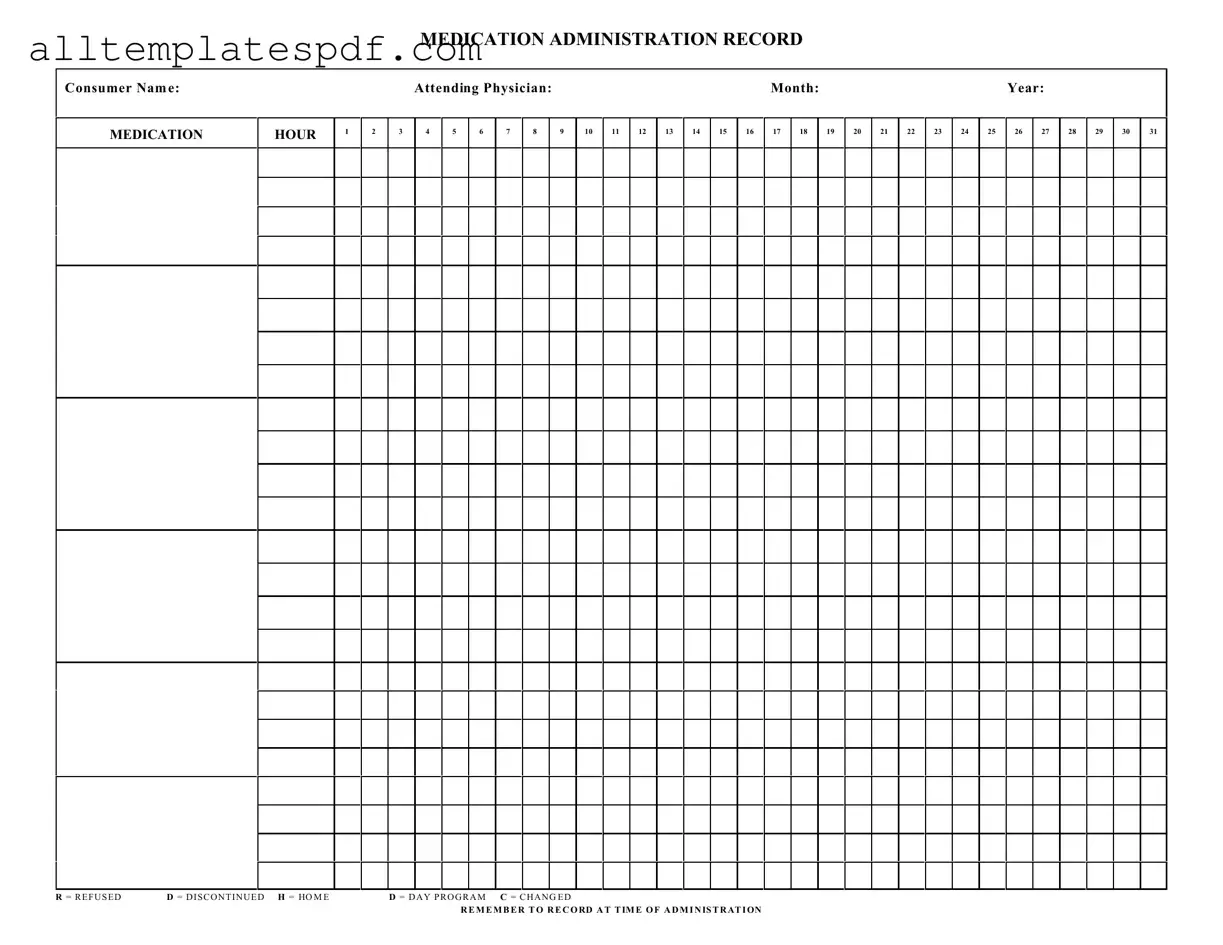Filling out the Medication Administration Record Sheet is crucial for ensuring proper medication management. However, mistakes can easily occur. One common error is failing to include the consumer's name at the top of the form. Without this essential information, it becomes difficult to track which medications are administered to which individual, leading to potential mix-ups.
Another frequent mistake is neglecting to note the attending physician's name. This detail is important for accountability and communication. If a question arises about a medication, knowing who prescribed it can facilitate quick resolutions and ensure that the right person is contacted.
Many individuals also overlook the importance of accurately recording the date and month on the form. Inaccurate dates can lead to confusion about when medications were administered. This oversight can have serious implications for ongoing treatment plans and medication schedules.
Additionally, some people forget to check off the appropriate boxes for the medication status, such as "refused," "discontinued," or "changed." Each of these indicators provides vital information about the consumer's treatment and adherence to their medication regimen. Missing this step can result in gaps in care.
Lastly, not recording the time of administration is a significant mistake. The instruction to "remember to record at time of administration" is crucial. Accurate timing helps in monitoring the effectiveness of medications and can assist healthcare providers in making necessary adjustments to treatment plans.
